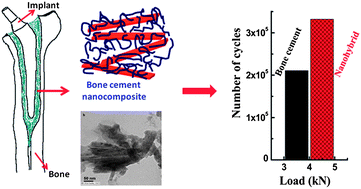Layered double hydroxide induced advancement in joint prosthesis using bone cement: the effect of metal substitution†
Abstract
Poly(methyl methacrylate) based bone cement and its nanocomposites with layered double hydroxide (LDH) have been developed with greater mechanical strength and biocompatibility as a grouting material for total joint arthroplasty. Bivalent magnesium has been replaced with trivalent aluminium with various mole ratios, keeping the layered pattern of the LDH intact, to cater for the effect of varying substitution on the property enhancement of the nanocomposites. The intercalation of


 Please wait while we load your content...
Please wait while we load your content...